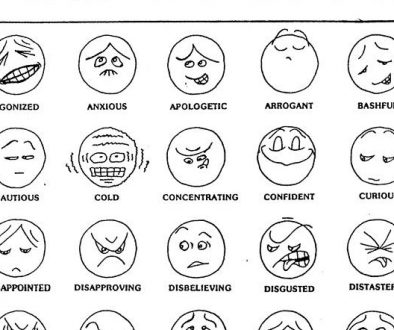The Zero Step of NVC or “I’ll work on me, you work on you.”

“I’ll work on me, you work on you.”
Once we learn a communication tool like NVC, our enthusiasm can extend to a heartfelt desire to share it with others. We imagine that if we are benefiting from the tools of empathy, honesty and self-connection, those we love and care for will also. We notice that our own compassion increases and our psychological suffering decreases. Of course, we want that for those we love!
Sometimes this can actually increase the likelihood of conflict, though.
Soon after we first learned NVC, our daughter returned home for a visit after time away at college. I enthusiastically engaged in “connecting conversations” liberally sprinkled with the mechanical use of observations, feelings, needs, and requests. I said things like, “Hello, dear one, when I notice you have just arrived home and are calling your boyfriend before engaging with me, I feel disappointed and frustrated because I need to connect! Would you be willing to put that phone down and hang out with us?”
Our daughter replied, “Who stole my parents and left you here?” Perhaps I answered with, “Oh, what are you observing? I think you are evaluating me. Can you be concrete and specific about what you are seeing and hearing? Would you be willing to tell me what you feel and need and make a clear and present request?”
She cried, “My God, what workshop did you attend now?” As she walked to her room and closed the door behind her.
When she regained her willingness to emerge from her room, perhaps I greeted her with, “Gosh, dear, it would have been nice if you would have empathized with my needs before just walking away! My jackals are saying its rude to shut the door in my face! Don’t you know I have feelings and needs, too? Would you like some support in learning how to connect with me, NVC-style?”
She, of course, returned to her room, maybe to have a “normal” conversation with her boyfriend on the telephone, perhaps feeling confused and frustrated, maybe longing for a sense of comfort and connection, affection and acceptance.
Meanwhile, I fumed in frustration, wondering about our failure to connect. My mind raced with both self-judgment (“I can’t even communicate with my own daughter! How could I ever contribute to peace in the world?”) as well as judgments of her (“Can’t she appreciate that I am trying to connect? She’s so ungrateful and self-centered! After all I have done for her! Doesn’t she know I’m the one who pays for that cell phone? And her car expenses? Jeesh!”)
It appeared to me that NVC had made things worse, not better. My judgments even went toward NVC: “What kind of communication method makes things worse the moment you start using it? There must be something wrong with NVC!”
Somehow, I regained the wisdom to put NVC mechanics away realizing that I had a lot to learn, and returned to “normal” conversation, surviving the Thanksgiving break. I’m grateful for the support of my wife, who no doubt gently coached me to cool it with jargon. I clearly saw that attending a brief workshop with Marshall was not enough to become an overnight expert. We needed a community of practice and support. We started attending our local practice group, the next step in a long journey of integration that still continues almost 17 years later. We also looked for ways to hang out with more experienced practitioners, joining the Planning Team that organized local workshops for Marshall and other trainers. We also dove into trying to integrate NVC into our mediation practice. We discovered more ease with using NVC with other people’s conflicts!
One important insight from that integration is the realization that practicing NVC is an inside job and does not require others to change their behaviors, capabilities, beliefs or values. In other words, in only takes one person to practice NVC!
If I knew then what I have learned since, the interaction with my daughter would have been quite different. I would have practiced “stealth NVC”, with the goal of never revealing that I was “doing NVC” and free of the expectation that she “do NVC” either. I would have started with my own “zero step”, in other words doing my best to connect with the intention of NVC to create a quality of connection that inspires compassionate giving and receiving inside me!
Here’s a couple of ways I could have practiced. First, I wish I had written down all those judgments. Writing down judgments sharpens the skill of observation. Then I could have examined each judgment and empathized with myself. For example, when I tell myself, “I can’t even communicate with my own daughter! How could I ever contribute to peace in the world?” I notice I feel exasperated and long for a sense of competence. I need connection and peace!”
Another way to practice is a “do over”. A “do over” is a practice method imagining the same scenario using NVC consciousness, exploring how it might be different:
Here comes my “do over”:
First, before our daughter arrives, I spend some time giving myself some empathy, maybe giving and receiving empathy from my wife. I notice I’m feeling nervous, needing connection and ease in this “welcome home” event. I take my time, savoring these needs, enjoying the longing for connection, anticipating the joy of our reunion. This is like my “zero step”, contacting the consciousness of NVC. I notice calm arising in me. I feel alert…and I feel open to outcome, wondering what will happen when she walks in the door…
She arrives!
Me: “Welcome home! I’m so glad you are here! Would you like a cup of tea or something to eat?”
Her: “I’m not hungry.”
She picks up the phone and starts to talk to her boyfriend.
I notice my disappointment and frustration. I give myself some silent empathy: I tell myself, “Aw, Jim, are you so longing to connect with your daughter. Do you want to spend every precious moment of this time connecting with her, having fun, learning what she has experienced at school?” As the sense of self-acceptance grows within me, its easy to shift my empathy toward her. I imagine she is longing for connection with her boyfriend…I feel compassion and understanding, realizing she needs the same thing as me. I feel such connection…I actually want her to connect with her boyfriend, imagining she will be happier if she gets what she wants. I want nothing more than her happiness! Of course I want to be with her, and I feel patient, savoring that she is safe, at home, with me.
After a 15 minute conversation with him, she says, “What a jerk! He says he’s too busy to see me, he would rather be with his friend.”
Me: “Ouch! I guess you feel hurt and disappointed, you want to hang out and connect with him!”
Her: “Yes! I’ve been looking forward to being with him. I’ve been away from him for so long, and I won’t be home for long! Why can’t he think of anybody else but himself!”
Me: “Awww…You really long to be cherished. You want to use the precious time you have to enjoy one another.”
Her: Crying softly, “yes!”
Silence follows, she reaches out for a hug and I hold her…
Now, re-reading my imaginary dialog a sense of warmth enfolds me. Even though the original “real” dialog happened almost 17 years ago, the feelings I have right now are what is most real for me. I feel inspired and empowered to try to use NVC in conflicts that arise in my life. I cherish the power of the “zero step” to cultivate warmth, presence and open-hearted connection. And, I still have the “do over” in my tool box for the inevitable moment when I blow it again, and slip from the consciousness of compassion and slide towards correction.
How do you feel reading this? Can you imagine how shifting from “doing NVC” to “being NVC” might contribute to your well-being? Do think that using the “do-over” might contribute to your learning and integration?
I’m open to receiving your responses and reactions!



